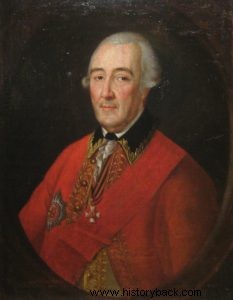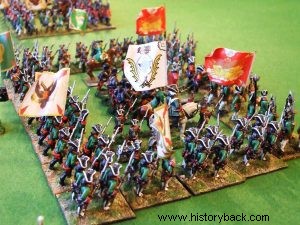
The battle in Cagul (today's Cahul, Moldavia) was one of the most important of the Russo-Turkish War of 1768-74 and of European history in general. Nevertheless, it remains relatively unknown. And yet there the Ottoman yatagani was crushed overwhelmingly.
Even more unknown remains the key contribution to the Russian triumph of a Greek, the chief gunner of the Russian army General Petros Melissinos. Russians and Ottomans had already been fighting for two years without serious results until then when General Piotr Rumiantsev's army advanced into Moldavia. The Russian general had 38,000 men and 118 cannons.
Opposite had assembled an Ottoman army of 75,000 men – 45,000 infantry, 30,000 cavalry – reinforced by at least 80,000 Tatar cavalry – some sources say 100,000. The two armies met in the area of Cagul on July 21, 1770. Faced with formidable Turkish superiority in cavalry
The Russian commander, despite the superiority of the enemy, decided to attack. In his decision he was supported by Melissinos who believed that with the close cooperation of infantry and artillery the Turks could be defeated.
Thus the Russian infantry formed four large squares, each with about 8,000 men. Organic artillery was placed in each block, while the cavalry was positioned behind the blocks in a reserve role. Then with flags raised, the Russian army attacked.
The Ottoman commander, the Albanian Izavade Halil Pasha, immediately unleashed the cavalry against the advancing Russian mass. However, his horsemen suffered terrible losses from the volleys of the Russian infantry and the cannons of Melissenos. The Turks were so numerous that each shell cut to pieces dozens of men and horses.
In this way the Russian advance continued. Khalil also threw his infantry into the battle. The Turks managed to break, temporarily, a Russian block. But the situation was saved by Melissinos by gathering his light guns and mowing down the attacking Turks from close range.
The Turkish infantry were killed by the hundreds receiving, from a short distance, the bullet ammunition of the Russian cannons, the so-called "canisters" (they contained everything that could kill, from musket "balls" to small pieces of chains).
The Russians continued their slow advance, trampling over the bloody, dismembered bodies of the Turks until they reached the front of the Turkish camp. the Turks, having suffered dramatic losses and the consequent deterioration of morale, and seeing the Tatars inactive, could not withstand the Russian raid and soon their camp was occupied.
The Russians also captured 130 Turkish guns. The losses of the victors were small. Only 1,000 – 1,500 dead and wounded. Accordingly, the Turks had losses of the order of 20,000 men.
After the battle, the Turks could not hold on to the area, losing the fortresses of Ismaili, Kilia, Akerman, Braila and others. The great victory was celebrated not only in Russia but throughout Europe, with Frederick the Great congratulating the Russians on this success.
General Petros Melissinos
The pioneer of the victory, Petros Melissinos, was born in Kefalonia in 1726. His father later emigrated to Russia. At the age of 14, the young Petros was accepted to the Military Academy of Ag. Petersburg. He participated in the Seven Years War. In 1759 he was transferred to the artillery with the rank of major.
At Cagul he was a colonel and after the victory he was promoted to lieutenant general. He also made a decisive contribution to the victories of the Russian army at Khotin and the Largo River, where he applied the same tactics that he applied a few days later at Kagul.
He was decorated by the so-called Catherine the Great, being described as the best gunner of his time. He died in service, in 1797, with the rank of general.

The Greek general of the Russian army, Petros Melissinos.

Miniature representation of a Russian infantry square in Kagul.
